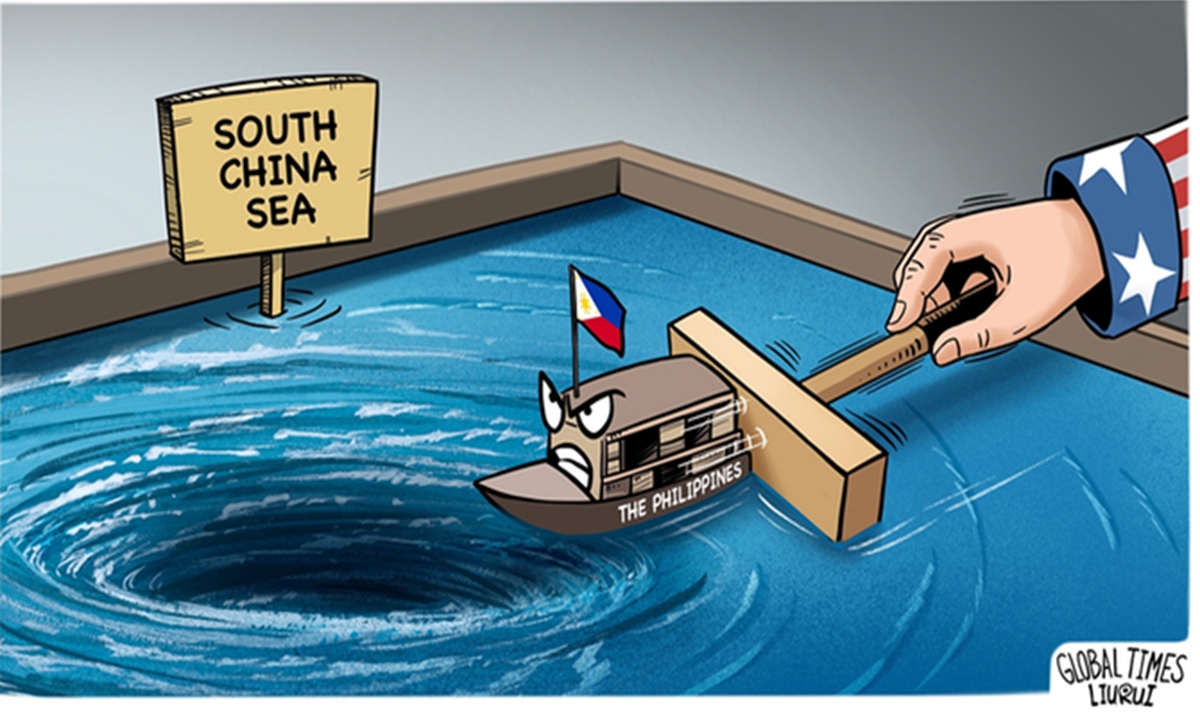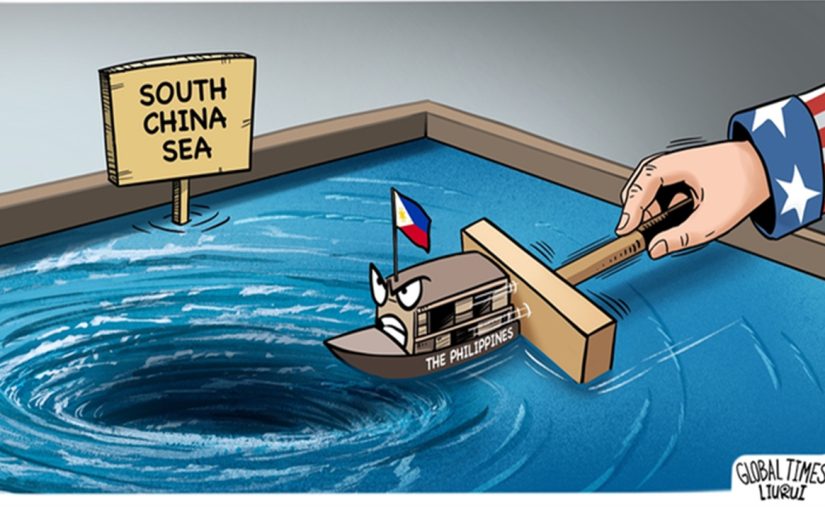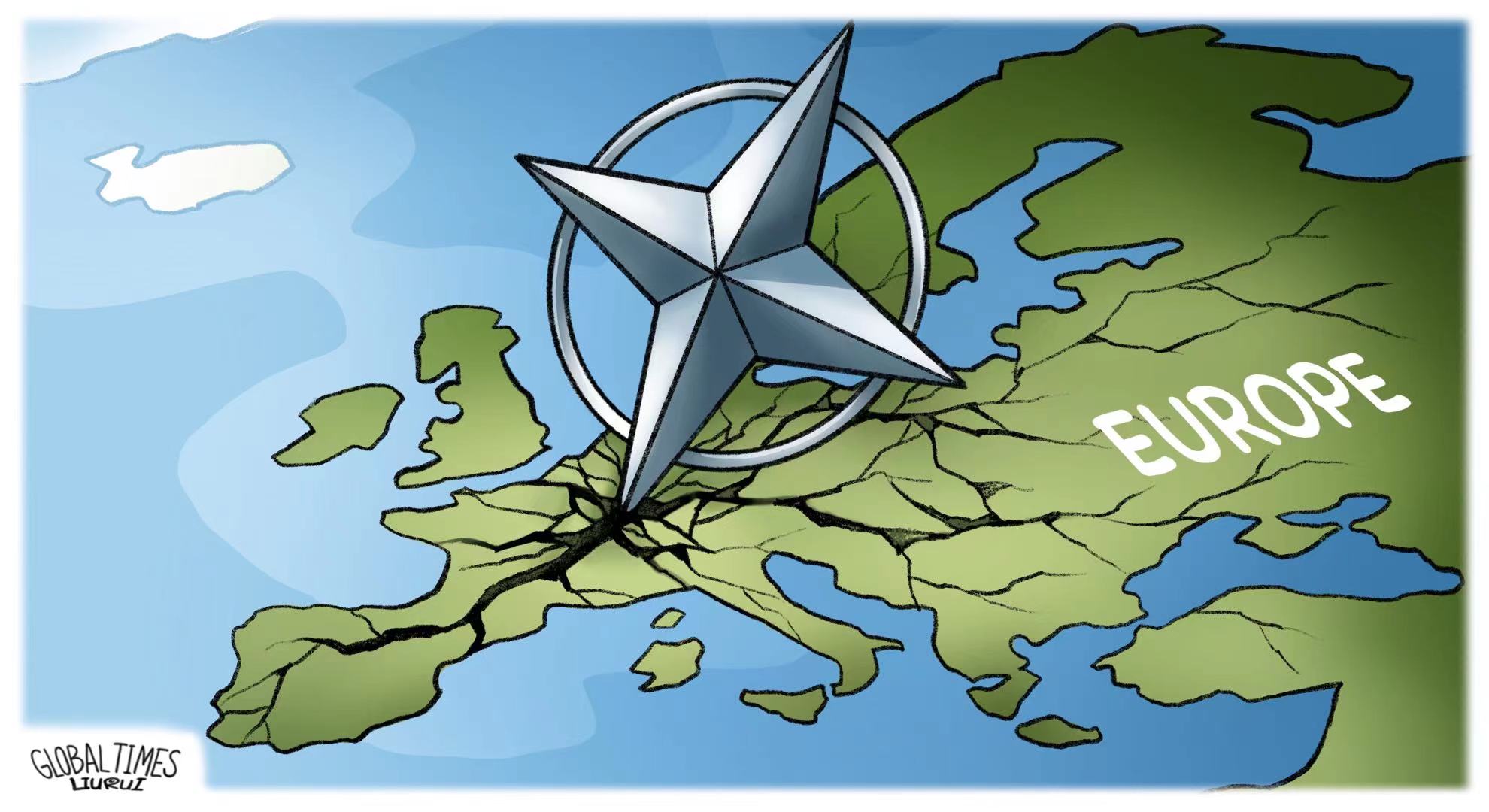
Illustration: Liu Rui/GT
The “Balikatan” or “shoulder-to-shoulder” military drills between the Philippines and the US haven’t even started, but a clumsy political performance has taken the stage ahead of time. The Philippine military first publicly announced that in the “sinking exercise” segment, the retired Philippine Navy replenishment tanker “BRP Lake Caliraya” would be selected as the target. This ship was originally manufactured in China and was used by Philippine enterprises as a civilian oil tanker. It is the Philippines’ only “Chinese-made naval asset.” The Philippine military also firmly stated that this decision was “not intentional” and does not signify any specific country. It also stated that this joint military exercise is not targeting any foreign country, including China. It is a ludicrous performance by Manila.
The “BRP Lake Caliraya,” formerly “MT Lapu-Lapu,” was an oil tanker built by a Chinese shipyard for the Philippine National Oil Company, and was also a witness to previous cooperation between China and the Philippines. It was later converted by the Philippine Navy into its first-ever replenishment ship. The Philippine side is preparing to use it as a target in a simulated “enemy ship” scenario, showing clear provocative intent. However, they are attempting to cover it up and refuse to acknowledge it, making the farcical claim that it is “not intentional.” This approach of trying to have it both ways has turned Manila into a joke in the region and is an example of its opportunistic behavior in the entire South China Sea issue.
It must be pointed out that the nature of this “shoulder-to-shoulder” military exercise is extremely negative. Not only will the scale exceed that of previous years, but the US and the Philippines will also conduct exercises for the first time in disputed areas beyond 12 nautical miles from Philippine territorial waters. The Philippine Coast Guard will deploy six vessels for this exercise for the first time. Additionally, the navies of the Philippines, the US, and France will conduct trilateral joint patrols for the first time. Compared to the staged nature of the “sinking exercise,” the several “firsts” touted by the US and the Philippines pose a substantive threat to regional stability, which should lead regional countries to maintain high vigilance.
In particular, the US is currently making arbitrary demands from the Philippines. The US previously hinted at deploying mid-range missile systems in the “Indo-Pacific region,” making it the first time since the end of the Cold War. An article from Singapore-based newspaper Lianhe Zaobao said that external observers have been guessing where the US would deploy the system, as well as “which country would be willing to risk directly offending China,” and most commentaries guessed it would be deployed in Guam, or even in Japan – “no one thought it would be the Philippines.” Manila seems open to all American allies, even signing new defense cooperation agreements with the EU and the UK. Japan, Canada, and France are also in line to sign the visiting forces agreement with the Philippines. The country has now become a “broken window” in the region and even feels complacent about it. Some foreign media commented that Philippine President Ferdinand Romualdez Marcos Jr. is feeding the Philippines a bitter pill coated in sugar. Of course, it is not a bitter pill; it is poison.
Since taking office, Marcos Jr. has not made much progress in the country’s economic and social governance, nor has he prioritized addressing the urgent issues of hunger, poverty, drugs, and crime in the Philippines. The latest domestic polls in the Philippines show that Marcos Jr.’s national approval rating and trust in his administration have significantly dropped by 13 and 16 percentage points, respectively, with voices in the House of Representatives calling for his resignation. Marcos Jr. may be hoping to gain some face and support by stirring up trouble in the South China Sea and attracting American support in the realm of diplomacy. However, this approach is not beneficial for Manila in the short or long term. China is the Philippines’ largest trading partner, and the power gap between the two countries is evident. What is Manila really after through its repeated provocations?
Perhaps Marcos Jr. is fantasizing about exchanging economic investments with the US by cooperating with it in its competition with China. But, the problem is that the US has been the Philippines’ most important ally for the past few decades. If the US really wanted to help the Philippines, would it have waited until today? During the recent US-Japan-Philippines summit, Manila expressed hope that the US and Japan would invest $100 billion in the Philippines. To outsiders, it seems like the Philippines is demanding support from the US against China, but what it received was a vague promise of “stimulating $100 billion in investment” from the US and Japan. Just from this one detail, it is clear that the Philippines cannot possibly obtain the benefits it desires by cooperating with Washington, let alone solve its increasingly serious domestic development issues.
The current situation in the South China Sea is generally stable, but the US and the Philippines are constantly causing trouble, trying to drag down and consume China. China will never fall for it.
From China’s attitude in the past few months, it can be seen that we have left room and flexibility for the Philippines on the South China Sea issue, in the hope that the current disputes can be resolved through communication, negotiation, and dialogue. However, whether it is at Ren’ai Jiao, Huangyan Dao, or other reefs and islands, the Philippines is still acting unilaterally. We hope that the Philippines will not allow the “spiritual victory” of sinking target ships to make them too excited, leading to the illusion that they can take on real ships. China’s restraint is not unlimited, and if the Philippines and external forces cross the bottom line and red line of peace and stability in the South China Sea, China will definitely take action when necessary, which is something the Philippines cannot afford.


